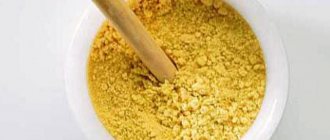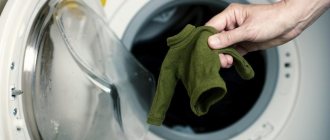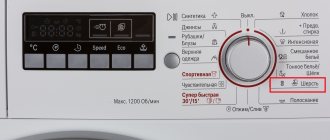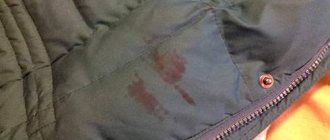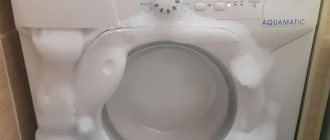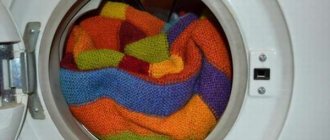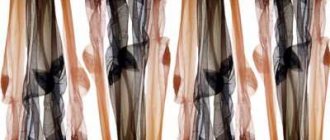Sleeping under an incredibly soft and weightless silk blanket is a great pleasure. But during use, stains may appear on your favorite bedding or they will simply lose their original appearance. In this case, you should carefully study the question of how to wash a silk blanket so as not to spoil it.
Types and features of silk blankets
The peculiarity of natural fiber used as filler is its resistance to clumping. A blanket with natural silk is created by hand, laying layers of insulation perpendicular to each other. Then it is sewn to the silk cover without quilting. For filling, long-fiber varieties of silkworm are used. The layers are a homogeneous mass of good strength.
Winter, summer, all-season
They produce several varieties of blankets, which differ in their warming ability, it depends on the number of layers and the fabric of the cover. Summer with a density of 120 to 190 g/m2 is used instead of a terry sheet or duvet cover at an air temperature of 24C°. All-season with a density index of 200...300 is suitable for winter in well-heated rooms. The winter option is a good alternative to wool, cotton or padding polyester analogues, lighter than a duvet. The filling density reaches 400 g/m2, such a sleeping item will warm you when the room is only +17C°.
Types of silk filler
Before choosing a silk product, you should carefully study the label. Some companies prefer wild silkworm threads, most prefer domesticated ones; the insects are specially bred and raised in captivity using a certain technology, when there are two larvae in the cocoon at once. Each fiber has its own pros and cons:
- Tussa made from wild silkworm larvae is subjected to bleaching, which negatively affects the quality of the raw material.
- Mulberry is artificially grown and retains the natural properties of the thread.
Note! Products marked AA grade are usually more expensive than A grade. Details below.
On silk blankets, stitching is often used for decorative rather than practical purposes. The fiber does not tangle during use.
Percentage of silk in filler
Silk blankets are made not only with silk, but also with mixed filling. Add to natural silkworm fiber:
- down of birds and animals (undercoat);
- long-fiber wool;
- bamboo;
- synthetics (mostly polyester).
On the labels you can see the following compositions with silk content from 100 to 30%.
For reference. The price of a blanket depends on what material and in what quantity is added to the silk base.
Case materials
According to the technology for producing blankets with silkworm thread, a cover is provided. Natural fabrics are used for these purposes:
- Silk in silk is the most luxurious option, with good aesthetic and performance characteristics. Such products are more suitable for summer, pleasant to the touch, and absorb moisture well.
- Batiste is a light, thin cotton fabric, not inferior in density to silk, but more pleasant and warmer. Recommended for people with sensitive skin, often used when sewing baby blankets.
- Satin comes in two types: regular and jacquard, characterized by high strength and durability. Smooth fabric with shine can be washed often, but over time it fades and becomes fleecy.
- Teak is a dense fabric with an anti-feather effect used for mixed fillers. The main disadvantage is the shallow scar, which is tactilely felt by sensitive people.
On a note . The best option would be a satin case. The fabric fits comfortably into a duvet cover, absorbs sweat well, and is pleasant to the body.
Hand or machine wash?
There are many supporters of both manual and automatic washing of things in the world, but when it comes to washing a padding polyester blanket, the number of supporters of hand washing decreases sharply. Why is this happening? After all, it seems that if you wash a synthetic blanket by hand, you can more thoroughly remove all the dirt and make sure that the washing at each stage is done as carefully as possible.
In fact, all this only sounds beautiful, once you try to lift a synthetic blanket that has been saturated with water, and then you will never want to wash it at all. It's simple - the main problem is that housewives do not want to carry a heavy, wet blanket. Indeed, it is better to neglect some minor advantages of hand washing, for the sake of one big advantage - fully automatic operation, where human participation is reduced to a minimum.
How to wash a synthetic blanket in a machine, what is the procedure? In fact, everything is not so complicated, the main thing is, on the one hand, to make sure that the volume of the drum allows you to stuff a dirty blanket, and on the other hand, that the appropriate washing mode is selected. Difficulties may arise with the mode, because oddly enough, most housewives use one or two familiar washing modes, and the properties of the rest are completely unknown to them. You will have to look for the desired mode based on guidance from specialists.
- If the control panel of your washing machine has the designation “delicate wash”, feel free to choose this mode for padding polyester.
- The “duvet” mode is conditionally suitable for washing a padding polyester blanket.
- The “hand wash” mode will also be useful to us.
In addition to choosing the correct washing mode and detergent, it is important to follow a certain procedure. What should be done?
- Twist the item so that it fits well in the washing machine drum.
- Place the blanket in the duvet cover and push it into the drum.
- Fill a bottle with cool water and water the blanket well; there should be no dry spots left.
- Next, close the washing machine door, pour detergent into the cuvette, set the desired washing mode and start the process.
- The delicate washing mode also involves gentle spinning, so you won’t have to pull out a heavy, wet blanket; most of the moisture will be removed by the machine.
We washed the blanket: what to do next?
You also need to dry the padding polyester blanket in an unusual way; you need to periodically disturb it, move it and shake it so that it doesn’t cake as it dries. Drying in direct sunlight or near hot objects is strictly prohibited. There is a risk of not only damaging the item, but also starting a fire.
The best option for drying a padding blanket is regular drying. You can straighten the blanket on it, and then periodically turn it over and shake it. At the same time, you can put the dryer in a ventilated place, where it is convenient and home conditions allow. You should not dry such a blanket in a drying drum, as it will not straighten out.
So, the problem of how to wash a padding polyester, or rather a blanket with synthetic padding, can be solved quite easily, unlike the problem of how to wash a duvet. Sintepon is a universal material; it not only allows you to retain heat, but is also not afraid of machine washing. Of course, if the correct mode is selected and normal drying conditions are created. Listen to the advice - wash without problems!
Silk varieties
Sometimes users, looking at silk products in stores, are perplexed why a viewing screen for blankets and pillows made from silkworm threads was invented. The answer is simple: the pocket is needed to ensure the quality of the filler used. Depending on the grade of silk, the cost of finished products is determined. For the “filling” use:
- Waste of raw silk obtained during the rejection process when unwinding the cocoon. Low-grade filler looks like cotton wool, the fibers are short, do not stretch, but remain in the hands, and have a milky tint.
- Mulberry short-fiber mulberry silk is prone to bunching; the products are additionally stitched to hold the fibers together. The more seams, the worse the quality of the raw materials used.
- Wild Tussah silk is not uniform in shade, this is due to the fact that the silkworm feeds not only on mulberry leaves, but also on other tree species. Filler of average purity level, with average consumer properties .
- Class A Mulberry contains clumps of fibers and has a characteristic pearl luster. This variety is most often used in the mass production of blankets and pillows.
- Mulberry class AA is high-quality silk, these are long fibers from intact cocoons, of a high degree of purity, used to produce luxury products.
Can it be washed?
You can wash a cotton blanket in a machine or by hand. Each method has its own characteristics.
Automatic washing is quick and less labor-intensive, but not every home has a machine that can accommodate a massive blanket. It must be taken into account that its weight increases several times when wet.
In addition, the following risks must be taken into account:
- Clumping of filler.
- Deformation of the product after contact with water and intense rotation in the drum.
- Difficulty in drying the product. Before you decide to wash, you need to think about where the blanket will dry. If it is not possible to take it out into the fresh air, you need to postpone washing.
If these difficulties do not bother the owner of the quilted blanket, then you can start washing.
Colors
Manufacturers offer silkworm blankets in various colors. Fillers come in white or cream shades. If the caterpillar feeds on oak leaves, it is dark gray. Mulberries produce white or yellowish threads that do not require chemical bleaches. High-quality varieties have a pearlescent sheen.
Note! Usually, expensive Mulberry AA class products are trimmed with gold edging.
Mode selection
To properly wash a bamboo blanket in the washing machine, follow these key rules:
- the water temperature should be 30°C, maximum - 40°C;
- use liquid cleaning products; regular powders are not recommended;
- the optimal drum rotation speed is no more than 800 rpm (relevant for both washing and spinning);
- be sure to use the “double rinse” function, and if it is not provided, then start re-rinsing yourself;
- refuse programs that run for 1 hour or longer: it is extremely undesirable for bamboo fibers to remain in water for a long time.
The most suitable mode is delicate. Typically it is programmed for a temperature of 30°C and minimum speed. If your machine has a “Pen” program, then this option will be more preferable. In this mode, the water is heated gradually, and the spin cycle is performed in short cycles, which allows you to effectively dry the product.
So, the algorithm for washing a bamboo blanket is as follows:
- Make sure that the product fits freely in the drum of the machine.
- Check the seams, sew up any tears or holes if there are any.
- Fold the fabric in several layers and roll it up.
- Remove the powder tray from the machine and rinse thoroughly under water. There should be no detergent left in it from previous washes.
- Return the tray to its place and pour the gel into it.
- Select the "Delicate" or "Feather" mode. If necessary, refer to the operating instructions.
- Set the re-rinse function.
- When the cycle ends, open the hatch and check how dry the blanket is. It is possible that due to the low spin speed it is still too damp. If this is the case, then restart the spin cycle.
It will take at least 3 days to dry bamboo bedding. In this case, you cannot use auxiliary means, for example, a hair dryer or battery. Direct sunlight is also undesirable. It is better to wrap the product in a large terry towel and let it absorb excess moisture. Then spread the canvas on a flat, horizontal surface in a room with free air circulation.
Bamboo products are not afraid of washing machines; on the contrary, they are an effective way to achieve maximum cleaning. They can withstand at least 600 machine washes without any damage. Still, you shouldn’t overuse it; you only need to wash it if it’s heavily soiled.
How to determine authenticity
To choose a silk blanket of a decent level, you should carefully examine and feel the textile product. Must not be:
- rough stitches, silk is fastened pointwise;
- Leading companies sew a piping along the edge of the blanket - a kind of brand sign;
- lumps, only low-grade silk can mat.
In the inspection pocket you can check the color, naturalness and length of the fiber. The blanket should fluff up quickly and weigh little.
Important! There are many counterfeit products on the market that look like branded products. You need to ask sellers for certificates.
Washing rules
A few simple recommendations:
- Read the tag before washing. The washing mode is selected as written on the label. If the manufacturer has not specified the mode, the product is washed in the “Synthetic” mode. If the label says that automatic washing is prohibited, it is not advisable to experiment. This item is intended for hand washing.
- Only one item can be washed per cycle. If the filling comes out, it will worsen the condition of the other jacket. Synthetic winterizer is an artificial insulation material; it does not like being soaked in water for a long time. Synthetic winterizer dries quickly, compared to other materials, and does not require special care. It is better to give preference to washing in an automatic machine; the main thing is to know how to properly handle this equipment.
- For such products, you should choose a gentle mode with a temperature setting of no higher than forty degrees. You cannot wash items on padding polyester at very high temperatures. Before washing padding polyester outerwear, you need to find out what material it is made of.
- A jacket with padding polyester does not need to be pre-soaked. This contributes to the appearance of stains and clumping of the padding polyester. This event will only worsen the condition of the jacket. It is better not to use powder. It is difficult to wash, it quickly absorbs into the fabric, and the jacket becomes covered with white spots.
- To prevent streaks, modern liquid products and manual rinsing are used. The principle of care is the same for both winter and autumn jackets. You cannot turn on the strong mode for padding polyester jackets. It is better to gently squeeze by hand.
- Sintepon is a delicate material, the strong mechanical impact that occurs during spinning damages it. Some padding polyester jackets cannot be machine dried and turn into a shapeless item. After finishing washing, the product is straightened and placed on a horizontal surface. This is the only way the insulation will not bunch up, and the item will retain its original appearance. If you follow the regime indicated on the label, the jacket will not have any defects after washing.
Denim jackets made with padding polyester are washed using a special detergent. Before washing, the product is turned inside out so as not to spoil the decorative elements on it. Pockets must be zipped and valuables removed. There should be no money, no documents, no keys in your pocket. The best option for washing padding polyester jackets, especially white ones, is 30-40 degrees. The fur from the padding polyester jacket is removed if possible. By purchasing a special cover for washing in a machine, you can wash the item more carefully. Caring for padding polyester jackets made of nylon fabric is easy. They can be dried in a washing machine. Please note that nylon fabric does not like high temperatures.
Ironing should be done as carefully as possible, using a thin, non-synthetic fabric.
- Man-made fibers will retain their shape if you use the delicate and hand wash function. To avoid deformation of the jacket, the drying mode is not set. Repeated rinsing will not give the detergent a chance to remain on the surface of the fabric. Rinse at least three times. During the spin cycle, outer clothing should not be twisted, just slightly wrinkled.
- Before putting an item into the machine, load special balls with it. They will break up the lumps that form during washing. Special balls made of light plastic with spikes are very similar to dog toys. Most people do not pay attention to them, not realizing that they can be used for washing synthetic winterizer jackets. They knock out dirt well; even hand washing cannot give such an excellent result.
Benefits of using plastic spiked balls or tennis balls:
- things wash better;
- powder consumption is reduced;
- less likely to get white streaks;
- products dry faster.
How to care
Any things get dirty over time. For most models, manufacturers only allow dry cleaning. It is not advisable to use washing powders with PVA.
If you need to refresh textiles, it is better to wash them by hand using soap and conditioner. Only large contaminants are removed in machines using a delicate mode. Dry silk in the shade. Stains are often removed with ethyl alcohol, then wiped with a damp cloth.
A high-quality silkworm blanket can be machine washed. The main thing is to distribute the product evenly over the walls.
Which blankets can be washed in a washing machine?
When answering the question whether blankets can be washed in a washing machine, it is worth considering the material from which they are made. Silk models are suitable for this type of washing. It is also permissible to use products that include plant fillers. At the same time, it is better to dry clean wool or down models.
It is not recommended to wash woolen, down blankets, or large size blankets in the washing machine.
The dimensions of the product are of no small importance. Double models often have a lot of weight even when dry
Once wet they become significantly heavier. When washing such products there is a risk of machine breakdown. To avoid such problems, it is recommended to have large items dry cleaned.
Preparation
Before washing a blanket, it is recommended to pay attention to its preparation. To do this you should do the following:
Assess the appearance of the blanket and the condition of the cover
It is important to check it for holes and the structure of the seams. To prevent the filling from coming out during washing, it is important to sew up all holes
If the seams come apart, they need to be repaired. Thanks to this, the filler will not clump. Treat stains with a product that does not contain chlorine. Small stains can be rubbed with a sponge soaked in laundry soap. Clean the blanket from dust. To do this, it is recommended to knock it out. A vacuum cleaner is also suitable for this purpose. Estimate the weight of the product. It should not be greater than the weight permissible for operating the washing machine. Assess drum fillability. The blanket in the machine should not lie too tightly. There should be a small amount of space left on your device after downloading. Fold the product several times and roll it into a roll.
It is better to wash the blanket with gel detergents.
The choice of detergent is important. Of course, it is permissible to use simple powder to clean blankets
However, it is better to give preference to gel products. They need to be added directly to the drum. Such compositions have a delicate effect on the fabric and perfectly remove all stains.
What not to do
The blanket must be washed in a washing machine according to certain rules. However, there are some prohibitions:
- It is not recommended to set the spin and drying mode to more than 800 rpm. This will simply ruin the product.
- Do not load blankets that are too heavy into devices that are not designed for this purpose. If the product weighs 3 kg, and the machine can withstand 5, this cleaning method cannot be used.
- Do not try to replace liquid powder with shampoo or dishwashing detergent. Such compositions are not suitable for machine washing.
Temperature
The blanket can be washed in a machine, but it is recommended to set the program correctly. In order not to damage the product, when choosing a temperature mode, it is necessary to take into account the material from which it is made.
Undemanding models that contain synthetic filler can easily tolerate temperatures of 40-60 degrees. In order not to harm down or flannelette products, you should not set the mode to more than 40 degrees. Wool, bamboo, and silk models require cool water. Its temperature should not exceed 30 degrees.
Washing mode
When choosing a washing mode, it is recommended to take into account the material from which the blanket is made:
Down models, like down jackets, are washed in the “cotton” mode. In this case, the spin should not exceed 800 rpm. Wool and silk models are considered the most capricious. They should only be washed on a delicate cycle. In this case, it is worth using a soft spin - no more than 500 rpm. Products with natural fillings can be washed in a machine with a load capacity exceeding 7 kg. For models with padding polyester, silicone or other synthetic fillers, a spin speed of 800 rpm is suitable.
It is important to set the “synthetics” washing program. They are lightweight, so a machine with a load capacity of 5 kg is suitable for washing. Bamboo products should be washed as carefully as possible.
The best option would be a water temperature of no more than 30 degrees. You should also use a gentle squeeze that will not damage the structure of the product.
Pros and cons of silk blankets
The products are soft and light, the fiber is a good thermostat, does not create the effect of overheating, and maintains natural body temperature. Hypoallergenic fiber is not electrified and is not of interest to insects.
Blankets with silk filling also have disadvantages: high cost and difficulty of care.
For reference. Silk can absorb moisture up to 30% of its volume.
High-quality silk blankets have a beneficial effect on the body, provide comfortable rest and restful sleep. The main thing is to choose the right product, taking into account seasonality and the air temperature in the apartment or house.
Processing in an automatic machine
Processing household items that are bulky and heavy when wet in a washing machine makes your work easier. But you can use automatic processing only if it is allowed by the manufacturer.
Mode and spin
For a blanket made of natural camel wool, the “wool” or “hand wash” mode is optimal.
As with other items made of wool, it is not advisable to use a spin cycle. As a last resort, you can set this parameter to a minimum, at your own responsibility.
This limitation is due to the peculiarity of processing natural wool, which can become matted and deformed under intense exposure.
Temperature
If there is a label for the item, then the temperature should be set to that recommended by the manufacturer. If this parameter is not known, then it is better to choose +30°C.
Instructions
Work order:
- Prepare the blanket itself.
- Roll it carefully and carefully, first into a roll, and then in the shape of a snail.
- Place the blanket in the drum.
- Pour detergent into the compartment on the body.
- Set the “wool” mode.
- Adjust the temperature and spin function.
- Set additional rinse.
If the blanket does not fit in the drum, you will have to hand wash it or take it to the dry cleaner.
This video will show you how to wash a camel blanket in a washing machine:
Entrust the item to professionals
The best solution is to take your silk blanket to the dry cleaner. Specialists will remove dirt using the dry method and refresh the product. With the help of careful processing, professionals will return the bedspread to its original appearance.
If you have never used dry cleaning services, we will tell you how the process works. The blanket should be brought to the collection point or handed over to the courier. The technologist will carefully examine the product, examine the contamination, determine the type of stains, tell you about the chosen method of processing silk, and announce the cost of the work.



